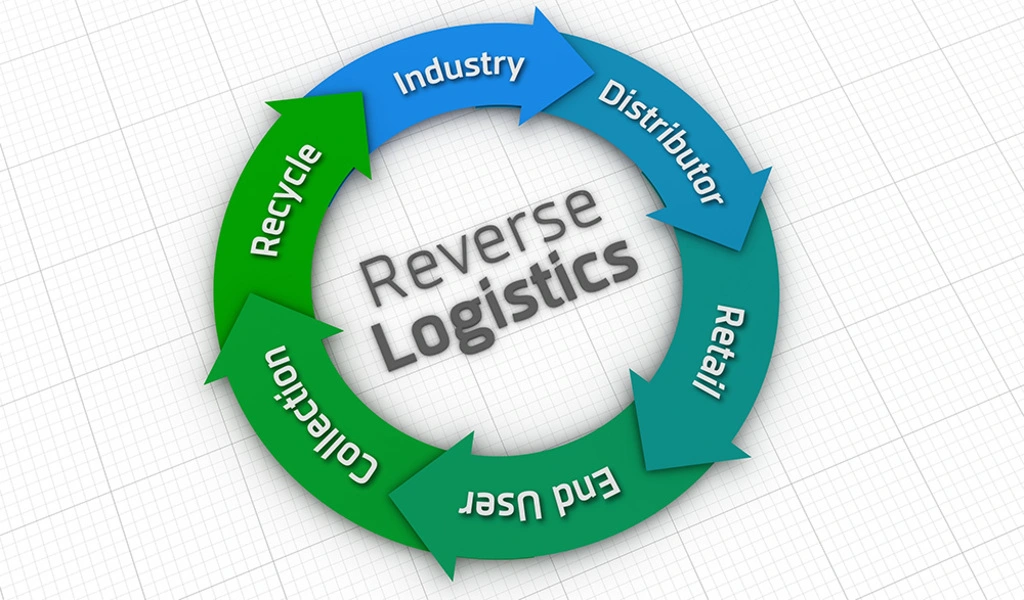Business
Reverse Logistics 101: A Comprehensive Guide to Unlocking Value from Returns

Welcome to the world of reverse logistics, where returns don’t mean dead ends but rather open doors to untapped value! In this comprehensive guide, we will delve into the intricate web of processes and strategies that can transform your returns management from a headache-inducing nightmare to a lucrative opportunity.
Whether you’re an e-commerce giant or a small business owner, understanding the ins and outs of reverse logistics is crucial in today’s competitive marketplace. So buckle up and get ready to unlock the hidden potential in every return – because it’s time to turn setbacks into success stories!
What is Reverse Logistics?
Reverse logistics is the process of returning goods and materials back to their original point of supply. It is a critical component of any supply chain and can have a major impact on a company’s profitability and competitiveness.
There are many reasons why goods and materials may need to be returned, including: – Damaged or defective items – Incorrect or incomplete orders – Excess or obsolete inventory – Customer returns or exchanges Managing reverse logistics can be complex and challenging, but it is essential for businesses to do so in order to optimize their operations and maximize value from returns.
Benefits of Reverse Logistics
In any manufacturing or distribution process, there are always going to be returns. Whether it’s because of customer dissatisfaction, change in demand, or material defects, product returns are an inevitable part of doing business. While product returns may seem like a headache for businesses,reverse logistics can actually be used to create value and drive growth.
Here are some of the benefits of reverse logistics:
1. Increased customer satisfaction: By handling returns efficiently and effectively, businesses can improve the customer experience and create repeat customers.
2. Reduced costs: Careful management of returns can help businesses avoid the costly mistakes that can eat into profits.
3. Improved inventory management: Having a good handle on returned products can help businesses keep track of inventory levels and make better decisions about what needs to be stocked.
4. Boosted sustainability efforts: Properly managed reverse logistics can help businesses reduce waste and their environmental footprint.
Challenges of Reverse Logistics
Reverse logistics presents a unique set of challenges for businesses. In many cases, returns are unplanned and unpredictable, which can make it difficult to manage inventory and keep track of returned items. Returns can also be costly to process and ship, and may require special handling or storage. Additionally, customers may be dissatisfied with the return experience, which can negatively impact brand loyalty.
Strategies for Maximizing the Value of Returns
1. Returns are a fact of life in the ecommerce world.
2. The good news is that there are strategies you can use to maximize the value of your returns and minimize the impact on your business.
3. Here are some tips: – Use return data to improve your product and packaging. Look for patterns in what is being returned and make changes accordingly.
This will reduce the number of returns you receive overall. – Make it easy for customers to return items. Provide clear instructions and offer a variety of shipping options.
The easier you make it, the more likely customers are to actually follow through with a return. – Consider offering incentives for customers who return items. This could be in the form of a discount on their next purchase or a free shipping label.
Something to show them that you appreciate their business even when they’re not making a purchase. – Get creative with what you do with returned items.
If an item is still sellable, consider listing it on a secondary market site or holding a special sale just for returned merchandise. You can also donate items to charity or repurpose them for another use in your business (like using them as props in social media photos).
Automation and Optimization in Reverse Logistics
1. Automation and Optimization in Reverse Logistics The ever-changing landscape of technology has disrupted almost every industry, and the logistics sector is no different.
In recent years, there has been a growing trend of using automation and data analytics to streamline operations and optimize performance. This is especially true in the area of reverse logistics, where managing returns can be a complex and costly endeavor.
By automating key processes and utilizing data analytics to identify patterns and trends, businesses can gain a significant competitive advantage in the marketplace. Additionally, these tools can help to improve customer satisfaction by providing a more efficient and seamless returns experience.
Here are some specific ways that automation and optimization can be used to improve reverse logistics: Processing Returns: Automating the return process can help to accelerate product turnaround times and reduce costs associated with manual processing.
Additionally, it can help to ensure accuracy and compliance with regulations. Tracking Returns: Utilizing data analytics to track return patterns can help businesses to identify issues early on and take corrective action.
This information can also be used to improve forecasting accuracy and prevent future problems. Managing Inventory: Automated inventory management systems can help businesses to keep track of returned products and make sure they are properly stored until they are ready to be shipped back out again. This information can also be used to make decisions about restocking levels and product mix.
Conclusion
Reverse logistics is an essential component of any successful supply chain. With this comprehensive guide, you now have the tools to make your reverse logistics processes more efficient and cost-effective. By leveraging the right technology and strategies, you can unlock greater value from returns while also improving customer satisfaction and loyalty in the process. If done correctly, reverse logistics can be a powerful tool for increasing profitability for your business.




























